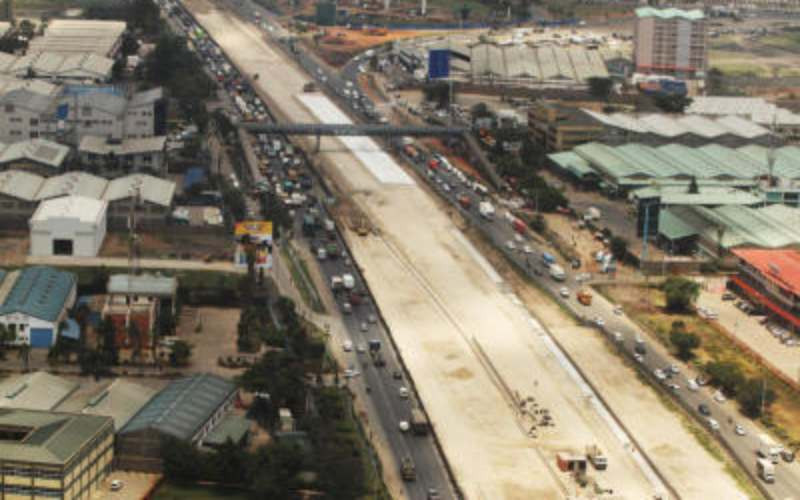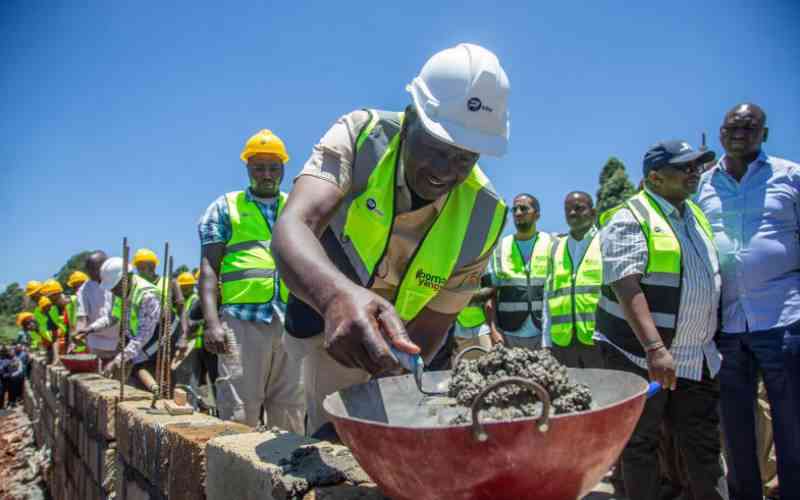
Kenya’s domestic steel production is expected to expand four-fold to meet rising local demand, firming up revenues for investors in the sector.
The share of imports is also reducing gradually over time, according to a new report by the International Energy Agency (IEA) published last week.
The East Africa’s largest economy’s demand for steel is projected to jump from less than 30kg per person per year currently to more than 120kg per person in 2040.
The IEA in the Africa Energy Outlook study shows that almost all of the steel consumed in Kenya is imported except for recycled scrap.
“This increase in production is not sufficient to meet all growth in domestic demand, and the share of imports will remain high,” the report says.
Kenya’s per capita consumption of key materials such as cement, plastics and steel is low compared to developing economies elsewhere.
But it has recently been growing vertically with more skyscrapers touching record heights with Nairobi’s The Pinnacle dubbed the tallest building in Africa.
More building plans taller than the Pinnacle have been approved.
Existing players normally recycle and import steel billets from China to process into finished products.
Just like cement, steel demand and production are key indicators of a developing country’s speed of economic growth.
But few players such as Devki Steel Mills and Bangladesh Steel Re-Rolling Mills Ltd, one of Bangladesh’s largest are for example, planning to set up multi-billion steel plants.
The former is investing Sh45 billion in Kwale and the latter is investing Sh6.5 billion in a yet to be disclosed location.
Kenya’s iron and steel imports rose 17 per cent to Sh97 billion in 2018 compared to the previous year, government data show.
Steel companies eyeing the Kenyan market have in the past cited lack of power supply as a key impediment but now Kenya is producing excess power and more power projects are in the pipeline.
Stay informed. Subscribe to our newsletter
South Korean giant steel miller Posco was in 2014 to set up a steel plant in Kenya but gave up on the project due to undisclosed reasons, with government officials citing power shortages.
Players in the local steel industry include Devki Group, Tononoka Steel, Jumbo Steel Mills, Steel Makers Ltd, Prime Steel Ltd, and Apex Steel.
They all rely on imports for further processing.
Just like China, rapidly developing nations have been characterised by heavy steel and cement demand.
Kenya has a busy cement manufacturing industry characterised by key players such as Bamburi Cement, Mombasa Cement which is owned by Tororo cement with Dangote and India’s Cemtech planning to invest in the country.
Most of the steel firms in Kenya are small operations owned by families chiseling little profit from the goldmine.
Kenya has significant iron deposits in Taita-Taveta, Kitui, Mwingi, Tharaka, Funyula among many other parts of the country but they remain untapped.
Steel is used globally in the manufacture of cars, trucks, aviation, shipbuilding, rail, housing and machinery.
A robust steel industry would see a multiplier effect of various other industries such as production of spare parts, building materials, ship building and many more.
Kenya spends about Sh60 billion per annum on the importation of steel from China among other countries.
It would also spur demand for power providing a market for power producers.
As Africa’s GDP is expected to pick up with increased inflow of foreign capital.
Mega projects are also planned to connect the continent and massive amounts of steel are needed for this projects.
Except for South Africa and Zambia, IEA says there is no significant investment in steel factories across the continent - opening opportunities for bold businessmen.
The Economist’s Intelligence Unit predicts that Africa is set to grow at speeds it experienced between 2014 and 2016 during the ‘Africa rising’ euphoria.
This will be backed by increased investments in basic infrastructure, internet, mobile phone technologies, regional integration and the push for quicker transport.
A drop in commodity prices in 2017 hit most African economies that had been growing at seven to eight per cent to an average growth of 5 per cent today.
But increased integration activities such as the Continental Free Trade Area, Single African Air Transport Market, SmartAfrica initiative, adoption of Swahili as a continental national language and others are expected to fuel trade and growth.
 The Standard Group Plc is a
multi-media organization with investments in media platforms spanning newspaper
print operations, television, radio broadcasting, digital and online services. The
Standard Group is recognized as a leading multi-media house in Kenya with a key
influence in matters of national and international interest.
The Standard Group Plc is a
multi-media organization with investments in media platforms spanning newspaper
print operations, television, radio broadcasting, digital and online services. The
Standard Group is recognized as a leading multi-media house in Kenya with a key
influence in matters of national and international interest.
 The Standard Group Plc is a
multi-media organization with investments in media platforms spanning newspaper
print operations, television, radio broadcasting, digital and online services. The
Standard Group is recognized as a leading multi-media house in Kenya with a key
influence in matters of national and international interest.
The Standard Group Plc is a
multi-media organization with investments in media platforms spanning newspaper
print operations, television, radio broadcasting, digital and online services. The
Standard Group is recognized as a leading multi-media house in Kenya with a key
influence in matters of national and international interest.









